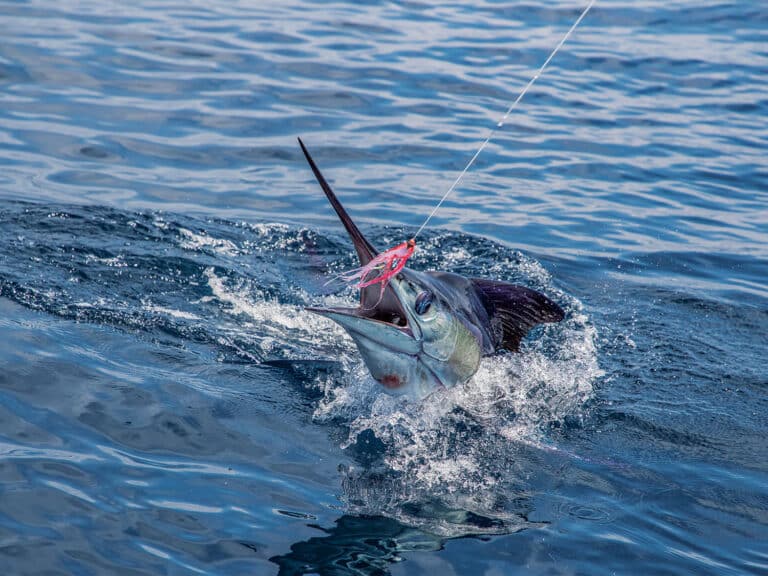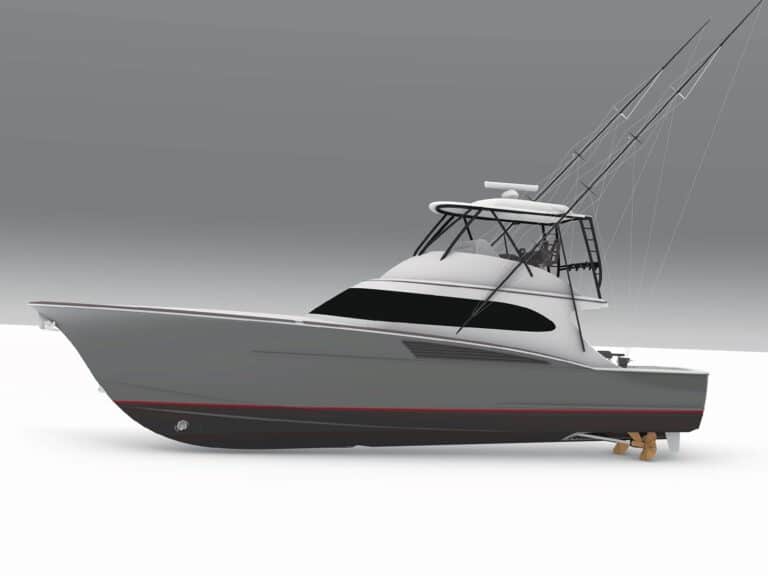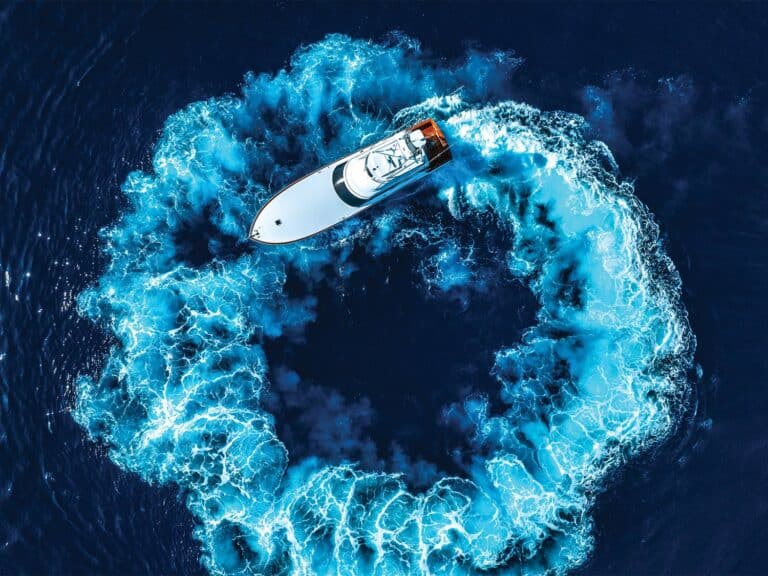
Special delivery: Sign up for the free Marlin email newsletter. Subscribe to Marlin magazine and get a year of highly collectible, keepsake editions – plus access to the digital edition and archives.
He’s practically a household name in the sport-fishing industry, with a celebrity that is nicely accented by a well-traveled Southern twang, extraordinary storytelling and a devilish sense of humor. As the owner and operator of Tijereta—a busy charter operation based out of Costa Rica’s Los Sueños Resort and Marina—Capt. Bubba Carter still fishes an impressive 200-plus days per year. Winner of the IGFA’s prestigious Tommy Gifford Award in 2019, he’s released over 30,000 billfish in a career that has spanned half a century and included storied locations such as Venezuela, the Virgin Islands, Panama, the Dominican Republic, Australia, Costa Rica and the Carolinas, among many others.
Q: How did you get your start in fishing?
A: My dad started running a charter boat out of our hometown in Hilton Head, South Carolina, which was a quiet coastal town back then. He had me ride along with him to help out with charters. I was 9 years old and couldn’t believe that I could get paid to fish. And I loved it! A few years later, Capt. Buddy Hester, a former Marine drill sergeant, asked my dad if he could hire me to be his mate. At 13 years old I went to work for Hester; he became like a second father to me. While he just growled at me in the beginning, Hester taught me so many fundamentals, such as the basics of boating, navigation and how best to take care of people. Working for him as a mate helped me to feel established. I wasn’t just riding along with my dad anymore. I felt like the real deal.

Q: What about college?
A: While my dad was supportive of my fishing endeavors, he was adamant about me giving college a try, at least for a year. I studied marine biology, but quickly realized that most of our time was spent in the lab. Eager to get back on the water and go fishing, I made some arrangements for a class to go out on my dad’s boat to collect plankton samples. It was a pretty genius scam. The college paid for the plankton sampling, and once we’d finished dragging the net, we’d spend the rest of the weekend fishing. One day the dean of marine biology decided to ride along for one of our trips. He had a great time out there with us catching fish. From then on, the dean joined us regularly, and eventually he pulled me aside and pointedly asked if I really wanted to be in school for the next decade of my life to pursue a career in marine biology. He said, “Bubba, you’re a fisherman.” So I left school and took my dad’s boat down to Florida. And that’s really where it all got started.
Q: Who do you consider your most significant mentors?
A: My dad and Hester are definitely some of the first to come to mind, especially early in my career. I’ve been lucky to come up under and alongside so many fishermen that I admire. Capt. Chip Shafer has been one of my greatest influences. He got to Oregon Inlet about three years before I did. I always tried to compete with him and to be as good as him. Many years later, I got to Costa Rica, and he shows up there too on the Old Reliable. Turns out he’s still kicking my ass, and doing it with a fly rod no less. He’s a good man, and he’s still doing everything better than everybody else. I talk to him at least once a week, and we fish together a lot. He’s just one of those guys that doesn’t need any fanfare, and yet he’s one of the best. Omie and Tony Tillett, Gary Stuve and Allen Merritt also come to mind when thinking about my mentors over the years. There are so many others that helped me out along the way, and even more still that I’ve admired.
Q: You’ve been everywhere. What are some of your favorite places to fish?
A: I’ve fished in a lot of great places, so it’s always tough to pick favorites. Cocos Island, Costa Rica, was the most virgin place I’ve ever fished. The edge was right at 5 miles from the coast, and it was a beautiful spot for marlin. You can’t fish there anymore since they made it a national park, but it was great while it lasted. Australia is another destination in my top 10. It’s the Jurassic Park of sport fishing, with plenty of big fish, little fish and great diving. St. Thomas has its magic, and so do the Bahamas and the Dominican Republic when the bite is going off. Then there are places like Venezuela, where I lived for a long time. I experienced incredible fishing and met my wife there. But at the end of the day, I always wonder why anyone would want to have a boat anywhere other than Costa Rica. Between the amount of fish here, the excellent seamount fishing, the great facilities, the slick-calm conditions and the cool people, it’s the top of my list. Always has been.

Q: Who are some of the young guns in the industry you admire these days?
A: I’ve seen a lot of young people come up the ranks in this business. Right now Capt. Newt Cagle on Big Oh and Billfisher’s Capt. Noah McVicker are two that really stand out to me as great young captains. Those two guys are getting it done. There are a lot of great captains out there, and they all have one thing in common. In Spanish it’s called gana—the desire. I think it’s really important that we see young guys climb the ladder, first working as mates in the cockpit, rather than just immediately starting at the wheel. If you really want to do this work, then you need to love it. It can’t just be for the money. This life is an addiction, not just a passion, and it’s important for young people to learn how to take care of maintenance and, more importantly, the clients.
Read Next: Learn More About Fishing in Los Sueños, Costa Rica
Q: What’s next for you?
A: I always say that charter captains don’t retire; they expire. So I’m going to run the boat until I can’t do it anymore. I really enjoy the seamount fishing here in Costa Rica, so I plan to continue those trips. The dream setup would be to build a boat specifically designed for seamount fishing and have someone else pay the bills. I’d also like to someday cut back to around 150 days a year to give me more time to ride my motorcycle and travel. Someday I’d like to visit more of Europe, and since I’ve seen more of Australia and Central America than I have of the United States, it’d be nice to travel there too. There’s still so much more I want to see and do.







